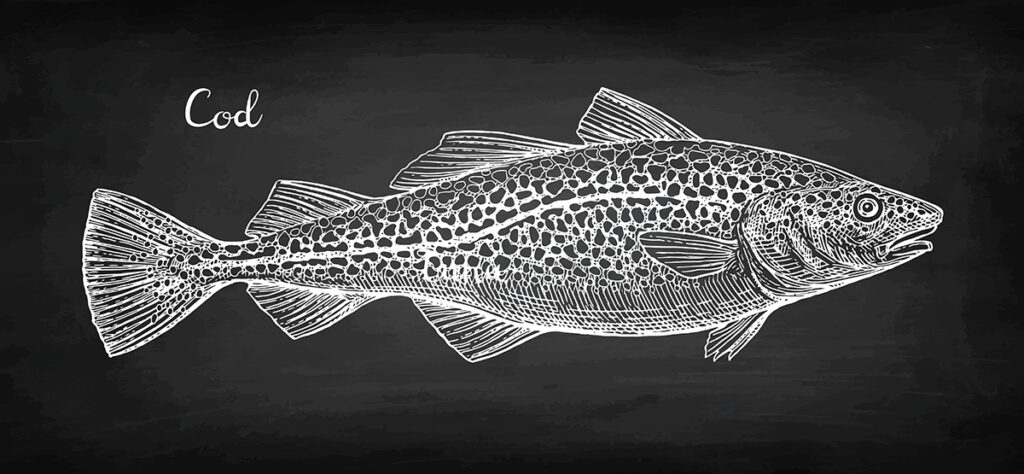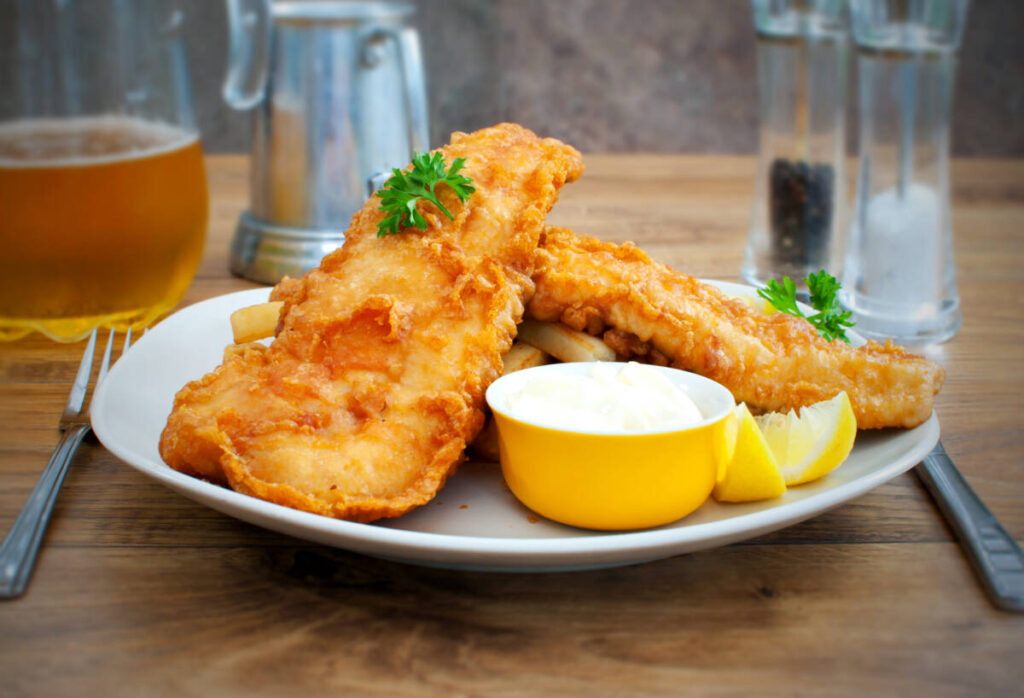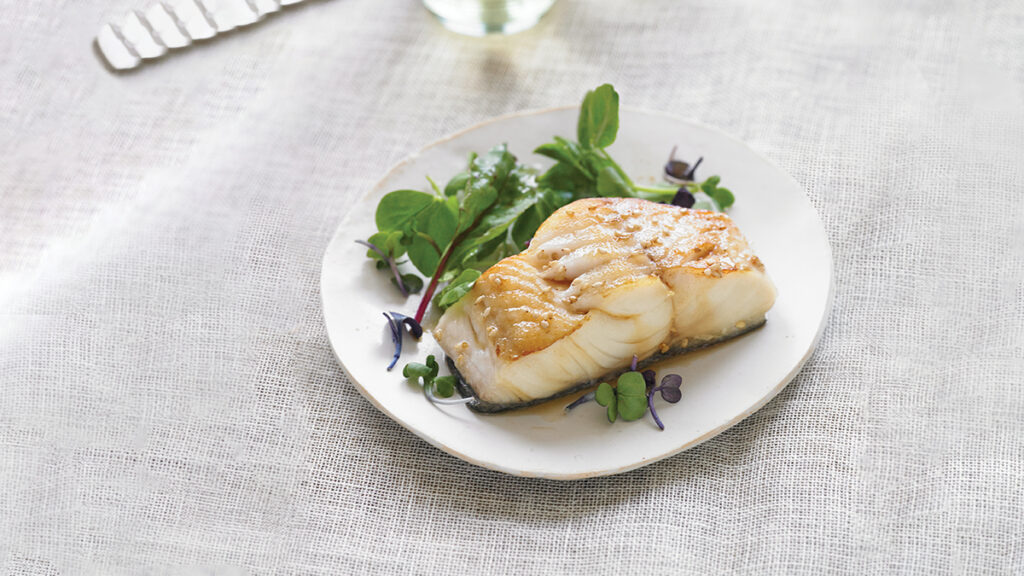All Your Cod Questions, Answered
For starters, we're talking about the fish, not the video game.
Feb 26, 2024
Salmon and tuna get a lot of love in the culinary world, but when it comes to the best all-around catch — a fish that’s hearty, delicious, and versatile, can be used in countless ways, and always tastes delicious — don’t count out cod. This incredible protein is not only one of the most commercially important fish species throughout history but also one of the most popular. The Vikings loved it back in the day, and even now, people who “don’t like fish” will often happily dig into a serving of savory cod, seared to crispy perfection.
But even if you eat it all the time, how much do you know about that cod on your plate? Let’s splash into the unknown as we explore some of the most commonly asked questions about the humble yet delightful bounty known as cod.
How big are cod?
Cod is a large cold-water species, averaging around 20 to 40 inches in length and weighing anywhere from 5 to 20 pounds, depending on age.

Where do cod typically live?
Two primary types of cod exist in the world, Atlantic cod and Alaskan cod, and each (not surprisingly) is named after the region it inhabits.
Atlantic cod are darker colored and frequent the waters of the North Atlantic Ocean, spanning the coast of New England and eastern Canada to the waters of Iceland, Norway, and the Barents Sea.
MORE: Where Does Vital Choice Fish Come From?
Alaskan cod, on the other hand, are a lighter olive-green color and tend to be found in the North Pacific Ocean — from the Bering Sea and Gulf of Alaska all the way to the coast of Japan and Kamchatka Peninsula near the far Eastern tip of Russia.
Whichever region they're from, cod are typically found swimming in moderate-sized groups — not schools — several hundred feet below the surface of these northern waters.
What does cod taste like?
Compared to other types of fish, like salmon, mackerel, and anchovies, which have a strong or very pronounced flavor, cod is exceptionally mild and clean — a reflection of the pristine waters where the species grows and thrives.
Most cod have a subtle, pleasant brininess and natural, light sweetness you don’t find in many other varieties of fish. Some even have hints of nuttiness in the fish’s moist, tender, large-flaked meat. Atlantic cod tends to be the sweeter of the two main varieties, whereas Alaskan cod is milder and a bit fattier, with a slightly firmer, chunkier texture.
What’s the best way to cook cod?
A better question might be: How do you enjoy eating your fish? Because cod is so versatile, it shines with almost any preparation you choose.
Cod is wonderful when baked in the oven, where it can retain both its moisture and delicate flavor. It’s delicious when quickly broiled until lightly browned and charred or grilled with a brushing of oil and fresh herbs. Poaching, steaming, and pan-searing to create a crispy crust over that soft, luscious flesh are also all fantastic cooking options.

What are the most popular dishes to use cod in?
Cod is an ideal fish to eat fresh from the skillet or grill with just a squeeze of lemon or dollop of garlic butter. But it’s also an exceptional ingredient to feature in all sorts of comfort food favorites.
It’s a popular option for classic dishes like fish and chips and fish tacos. Cod can also be used in chowders, fried in a crispy fish cake, or served with a Mediterranean-inspired tapenade of tomatoes, olives, capers, and garlic.
Feeling fancy? Top cod with pesto and Parmesan cheese, and bake it until golden brown. Or, relive your youth and serve it beer battered or as DIY fish sticks.
What seasonings pair best with cod?
Stick with flavors that highlight cod’s delicate flavor without overpowering it. Lemon pepper, garlic, paprika, dill, and robust herbs, such as parsley, thyme, basil, and chives, are all good potential partners. Cod is also delicious with Asian-inspired options like soy sauce and ginger or the evergreen classic, Old Bay seasoning. For something a bit more unexpected, try cooking cod with herbs de Provence — a blend of thyme, rosemary, oregano, and lavender that will give your meal some Mediterranean- or French-inspired flair.
What is salted cod?
Known as “bacalhau” in Portuguese or “baccalà” in Italian, salted cod is a traditional style of preserved fish — think of it as the seafood equivalent of jerky, created in an era before refrigeration and freezing.
Cod fillets (or sometimes whole fish) are cleaned, covered with a heavy layer of coarse salt, and then left to dry for a period of a few days to several weeks. After this “curing” process, the salt is removed, and the fish is allowed to dry even further. The preserved fish can last for months. Before cooking, the salted cod is rehydrated in water. It's then typically used in soups, stews, or salads.

What is black cod?
Life likes to keep us on our toes sometimes. “Tin” foil is actually made from aluminum. Prairie “dogs” are actually rodents. Koala bears aren’t bears in the slightest. And, when it comes to this highly revered seafood delicacy, black cod is actually a type of fish known as sablefish or butterfish. It’s not “cod” at all.
Still, these dark-bodied, buttery-tasting fish do share a number of physical similarities to cod — enough that early explorers often confused the two. And, despite their obvious taxonomic differences in the end, the name just stuck.
How about lingcod?
Similar to black cod, lingcod is another zoological misnomer. In this case, lingcod is actually what’s known as a greenling and is not even remotely considered a member of the cod family (hake, haddock, whiting, pollock) by experts.
So, where did that name come from? The fish shares certain common physical traits with both actual cod and a variety of bottom-dwelling fish called a “ling.” And, as humans are prone to do, somewhere along the way, someone combined those two terms, and the “lingcod” was born.
What’s the deal with cod liver oil?
You may have heard stories about older relatives being forced to choke down a spoonful of cod liver oil as a child. Historically speaking, cod liver oil could be considered the world’s first-ever vitamin. It predates vitamin capsules as we know them, with a history as a northern European folk remedy that stretches back centuries — all the way to the Vikings, according to some historians.
Early believers said it helped to speed healing, improve immunity, and reduce joint and muscle pain. Cod liver oil’s popularity peaked in the early 20th century and then gradually faded as other fish oil supplements took its place. However, even today, plenty of people swear by starting or ending their day with a tablespoon of this fishy, burp-inducing wonder.
How does cod compare nutritionally to other types of fish?
When it comes to omega-3 fatty acids, cod isn’t the absolute best source. For that, stick to seafood “gold standards” like salmon or tuna.
However, in all other areas, cod is an excellent nutritional equivalent to most other popular varieties of fish. It packs a lean and healthy 90 calories and around 1 gram of fat per 3-ounce serving. But with that same helping, you also get a hefty 19 grams of protein along with a good assortment of vitamins A, B, and D, phosphorus, and selenium. Overall, that means it’s definitely a “good for you” protein choice.







